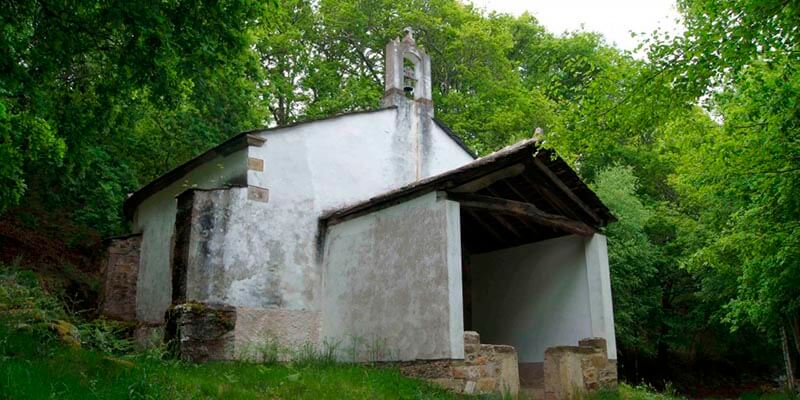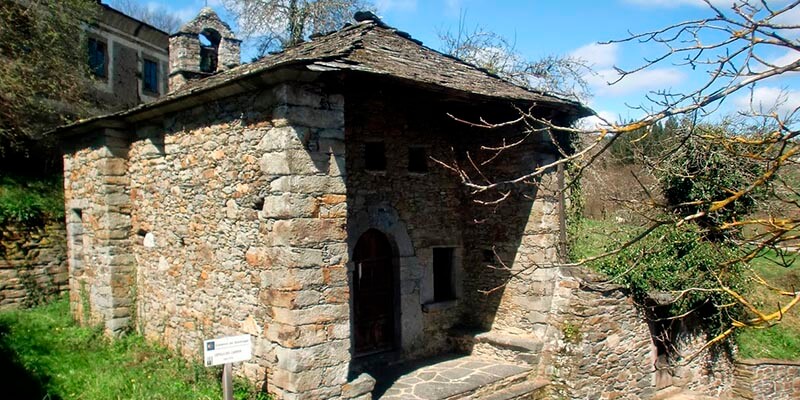Grandas de Salime
‹ Back to the stage
Grandas de Salime
- Residents: 943 aprox.
- Province: Asturias
Information
Get to know Grandas de Salime
The town of Grandas de Salime is located on the border with Galicia, is the last municipality in the Primitive way of the Principality of Asturias. Due to the proximity many of its older neighbors speak Galician nowadays.
Grandas is well known thanks to the milk producers that are installed in the same.
Grandas is very well known thanks to the milk producers that are installed in the same.
Grandas is a very well known town in Asturias.
Location
How to get there
To access the municipality of Grandas de Salime we can only do it by secondary roads such as the AS-12, AS-219, AS-28 and AS-14, all of them linking with the National N-634 at different points such as Navia, Luarca and Vegadeo.
Another option to get to the town is by bus, companies like ALSA offer daily services to Navia and Oviedo.
History / Culture
What to see
Túneles Romanos de Penafurada
This is a passage tunnel built in Roman times used to channel water from the Sierra del Acebo to the old gold mines of Valabilleiro. This tunnel, thanks to its low slope, was used as a passageway by the locals of the area, known in many parts of Asturias as “Antigüas”.

Museo Etnográfico
This museum was inaugurated in 1989 on the former rectory. Its main objective is to collect and disseminate the rural world of both Asturian and Galician concellos. The exhibition rooms can be divided between the rectory (with textile room, shoe shop, wine cellar, canteen …), the miller’s house (with threshing floor, mill, cortín …) and the manor house, which serves both barber and tailor, measurement system, dentist, beekeeping, hunting and fishing …

Museo del Chao Samartín
It is a museum based on the Chao Samartín site, which is in continuous excavation and conservation since the nineties. This site is composed of a Bronze Age castro, finding several pieces of great value during the excavations. These are exhibited in the museum with the aim of showing the evolution of the Chao Samartín settlements.
HOURS
From October to May it is open from Tuesday to Saturday from 11:00 to 13:00 and from 16:00 to 17:30 and on Sundays and holidays from 11:30 to 13:30. Guided visits to the castro: from Tuesday to Saturday from 13:00 to 17:30 and on Sundays and holidays at 13:30. From June to September it is open from Tuesday to Friday from 11:00 to 13:00 and from 16:00 to 18:00 and on Saturdays from 11:00 to 13:00 and 16:00 and 18:30. Guided tours to the castro: Tuesday to Friday from 13:00 to 17:00 (only until September 10) and 18:00 and on Sundays and holidays at 13:30.
TARIFTS
General admission: 4€ Between 5 and 16 years old and over 65: 2,50€ Groups (with previous reservation for more than 20 people): 1,50€/person Free admission for children under 4 years oldAll Tuesdays admission is free
.
INFORMATION OF INTEREST
Web: www.castrochaosamartin.esy.es E-mail: chaosamartin@grandasdesalime.esTeléfono: 985 627 143

Murales de la Central Hidroeléctrica
This is a set of murals by Joaquín Vaquero Palacios and his son Joaquín Vaquero Turcios. Some of the representations can be seen on the main facade of the gallery, which shows the process of electric energy production.

Ermita de Pedreira
This hermitage was erected in the late seventeenth century, specifically in 1689, in order to accommodate pilgrims who were making the Primitive Way to Santiago de Compostela and who had contracted leprosy. Today, the hermitage still preserves the evocation of the ancient malatería de San Lázaro.

Colegiata de El Salvador
It is a temple dating from the twelfth century and which underwent numerous reforms and later additions in the seventeenth, eighteenth and nineteenth centuries. Because of these continuous reforms, only the doorway and the gargoyles of the baptismal font are preserved from the original Romanesque.

Casa Magadán
This house, also known by the name of Don Lope or Casa de los Suárez, is located in the place of Santa María. The original building dates back to 1550, being inhabited at this time by Lope Alonso Magadán I, mayor of the municipality and attorney general for several years, accompanied by his son Gregorio Alonso Magadán.

Capilla del Carmen de Grandas
This chapel dates back to the eighteenth century and is located exactly at the foot of the Primitive Way, specifically as it passes through the Grandas de Salime to A Fonsagrada section. This temple is closely linked to the Casa de Linera, a typical house of the Galician nobility.

Área Recreativa de Grandas
It is a recreation and leisure area located in the interior of the municipality. Specifically occupies a shady extension, in the cut of the slope of a hill, in which plant species abound. Of all of them stand out above all some magnificent specimens of oak groves.

Information of interest
Local police
985 627 059 / 679 407 010
Civil guard
985 627 035
Fire department
112
Civil protection
112
Town hall
985 627 021
Health center
985 627 043
Tourism office
985 627 350
C/ El Salvador, 6

We send you your itinerary
Enter your details and receive your travel itinerary by email
Recommended
Gastronomy
Recommended
Festivals and Pilgrimages
Local festivity
19 de marzo: Fiesta de San José
Local festivity
15 de mayo: Fiesta de San Isidro
Local festivity
31 de agosto: Fiesta de la Bellido
Local festivity
16 de agosto: Fiesta de San Roque
Local festivity
13 de junio: Fiesta de San Antonio
Local festivity
Primer fin de semana de agosto: Jira campestre y San Salvador
Local festivity
21 de julio: Fiesta de Santa Marina
Local festivity
29 de mayo: Fiesta de los Remedios
Local festivity
31 de diciembre: Fiesta de Santa Colimba
Local festivity
2 y 3 de julio: Fiesta de Nuestra Señora del Carmen
Local festivity
Último fin de semana de agosto: Fiesta de la Sardina
Primitive Way
On foot
14 stages
















